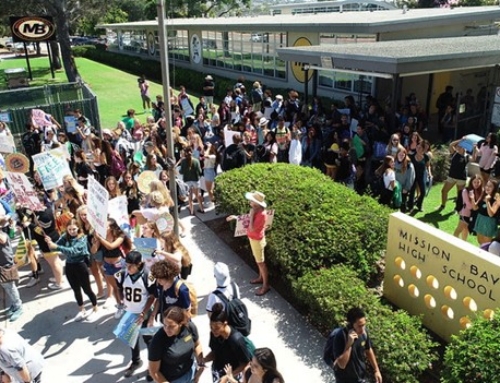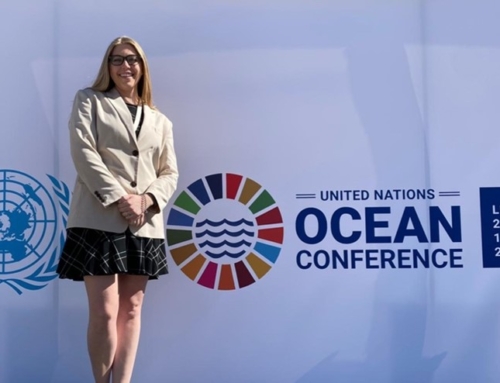It’s not easy visiting behind-the-scenes at a major airport – security protocols, you know – but a dozen STAY COOL members got to do it this Spring, guided by Paula Morreale and Katie Altobello, Associate Environmental Specialists at San Diego International Airport, after a warm welcome from Brendon Reed, Director of Planning & Environmental Affairs for the airport authority.

We met in the Innovation room, where we got a glimpse of some fascinating ideas for the future, including sleep cubicles in the terminals.
Next up was Terminal 2, the first airport terminal in the world to receive LEED Platinum certification, the highest available, and where SAN staff continue to find ways to make the facility even more sustainable.
For example, low-flow fixtures save four million gallons of water annually; capturing rainfall from the new parking plaza and using it in the cooling system saves another two million gallons of potable water a year (and keeps the runoff out of the Bay). They even manage to get thousands of gallons of clean water each year by recovering the condensate from air conditioners on passenger boarding bridges.
The airport’s solar array generates 5.5 megawatts, of clean, renewable energy.
Other smart improvements at the terminal include drought-tolerant landscaping, lots of natural light in the interior, a reflective roof, energy-efficient lighting and equipment, and efficient and clean power units at the gates so parked aircraft aren’t running their dirtier power for air conditioning and lighting.
The airport also cuts down on food waste by recovering and donating unused edibles (54K pounds in 2017) and composting the rest (365 tons in 2017). Special collection bins at security allow passengers to empty containers and reuse them once through screening.
SAN supports greenhouse gas reduction with incentives to rideshare companies for hybrids, alternative fuels and carpools, and with “The Good Traveler,” a program that sells third-party approved carbon offsets to passengers.
Our last stop was an expanse of scrubby grasses ringed by a tall steel fence. Here among an array of support facilities and under the roar of jets lies one of the most productive nesting colonies for the endangered California Least Tern, carefully nurtured by SAN staff.
Finally, we heard how the Environmental Affairs is tasked with figuring out how the airport can continue operating in the face of a changing climate. The San Diego Airport Climate Resilience Plan features strategies to manage storm water, and protect against rising seas. Meanwhile, a redesign of Terminal 1 will incorporate major sustainable design features – perhaps a future behind-the-scenes tour for STAY COOL members.



